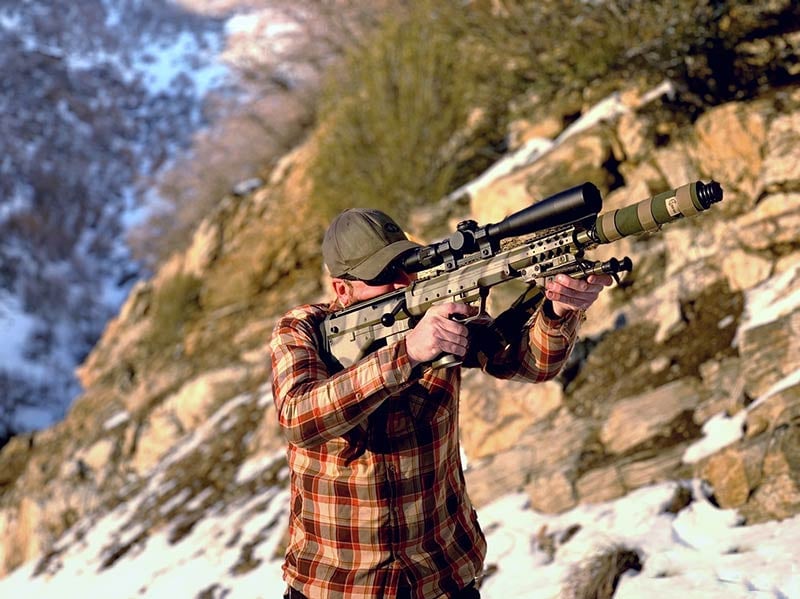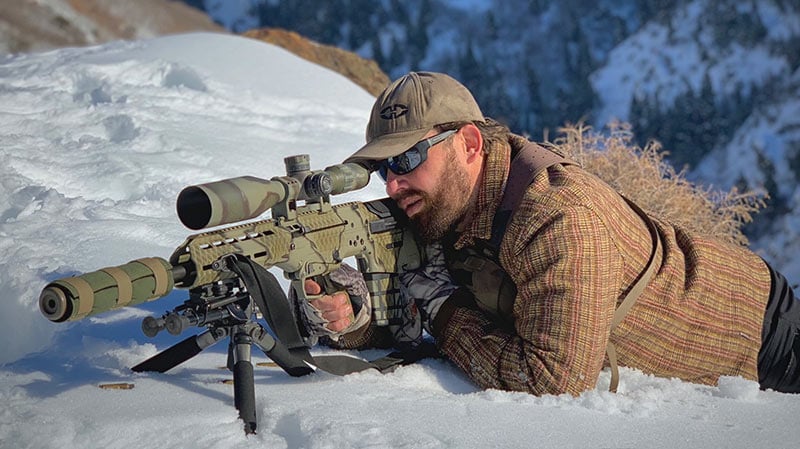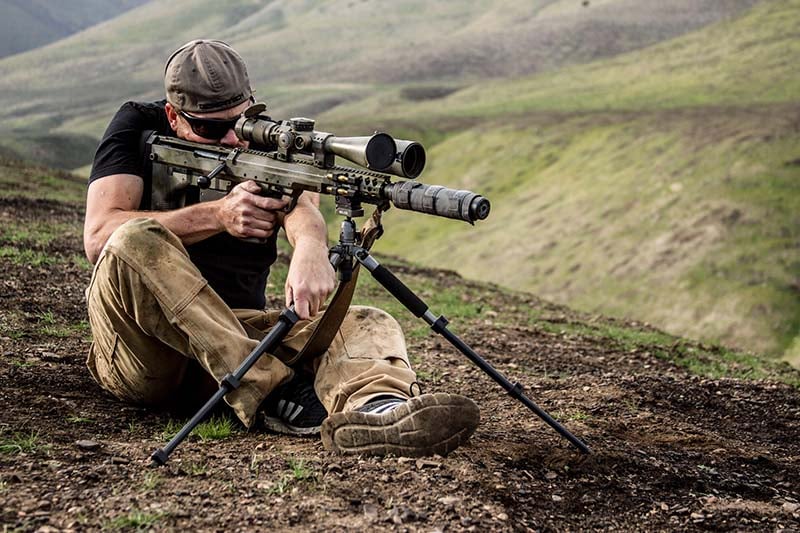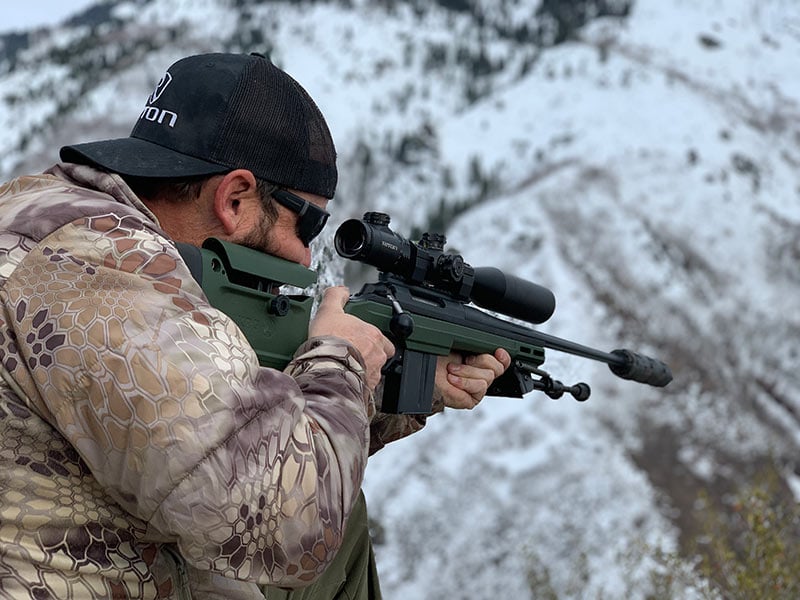For those of us who enjoy recreational and competitive shooting, positional shooting is part of everyday life; but for some newcomers to the sport, positional shooting may seem daunting or intimidating. Instead of avoiding these seemingly complicated shooting positions, you’d do far better to embrace them with open arms.
Let’s explore some positions you might find yourself in while slinging lead downrange and find out why some are more efficient than others.
Standing

Standing can be the most difficult position to shoot. (Photo: Jeff Wood/Guns.com)
Out of all the positions, standing is probably the most difficult as it requires constant use of muscles to balance – not to mention wind which can push rifles and shooters off target. For this reason, standing is the least desirable for rifle shooting; however, there are a few things gun owners can do to solidify this position.
One of the easiest means to stabilize shooting while standing is to simply add a sling. A sling allows shooters to create a rigid structure out of the upper body by tightening arms and shoulders against the sling. This rigid, arch-like structure makes a solid launch-pad for shots.
Another way to improve the standing position is to give up on the notion that you can remain utterly still. While some folks can manage this, most of us cannot. Instead of trying to remain completely still, shooters might be better off to embrace their movement. Many competition shooters use a pattern of movement, shifting their rifle on purpose either in a circle or figure-eight pattern while aiming. By purposefully moving their rifle they absorb the unwanted movement caused by shudders and other influences. As a result, the pattern of movement is, at the very least, predictable – and predictability breeds accuracy.
Prone

Prone shooting is, by far, the most stable position. (Photo: Jeff Wood/Guns.com)
If standing is the most unstable position, then the prone position — or lying stomach-down on the ground — proves to be the steadiest. Prone shooting requires no muscle movement, allowing those behind the gun to relax completely. Shooters can, in turn, truly focus on other fundamentals such as aiming, trigger control and breathing.
Though prone shooting offers the most stability, it doesn’t come without its challenges – namely, breathing. Due to the position on the ground, bellies flat against the Earth, the rise and fall of the chest can impact shooting. Breathing and sometimes even the beat of your heart can register in the scope affecting point of aim. This can be mitigated by rolling slightly to one side or the other.
Prone shooting is also favored among shooters due to its ability to easily integrate support aids like a backpack or bipod. These kinds of accessories enhance aim and produce better shots.
Sitting

Sitting while using a shooting aid steadies the gun. (Photo: Jeff Wood/Guns.com)
Sitting is a common way to shoot if too much ground interference (bushes, rocks, etc.) prevents the prone position. Sitting adds stability by bringing your center of gravity closer to the ground, requiring fewer muscles to maintain a steady position.
Crossing one leg also helps improve sitting shots, using bone structure to support the firearm. Triangles are sound structures, so if we can build similar structures with our arms and legs, and then further fortify them with aides like slings we can achieve a stable platform for better shots.
Kneeling

Resting the rifle on the knee in the kneeling position creates a triangular position that is more stable. (Photo: Jeff Wood/Guns.com)
Like sitting, the kneeling position brings us closer to the ground requiring less muscle movement; however, kneeling does require a fair amount of balance. As with other shooting positions, the most stable kneeling position is achieved when you create a rigid structure of bone. If you can, dig one knee in the dirt while the other remains upright and bent. This grants additional support for the rifle.
Kneeling is typically employed when a sitting position is either too low or when a shot needs to be made quickly. Keep in mind that terrain may dictate which knee remains off the ground, so practice the kneeling stance with each knee.
Support
There are countless devices available to help support shots. Shooting sticks, bipods, tripods, and support bags all increase stability when shooting. A tripod proves useful when stabilizing a difficult shot from a sitting or kneeling position — use your backpack for rear support and your steadiness increases ten-fold. Bipods and rear support bags can also make prone shooting more comfortable and easier on the shooter.
The standing position is immensely improved by adding the right height shooting sticks to help create a triangle. Depending on the shot scenario, even a rigid stick or tree branch can be used to stabilize your rifle before the shot.
Try your hand at several support accessories while practicing to fine-tune the best gear for you.
You can’t test out shooting positions if you don’t have a gun. Head over to Guns.com to scope out the latest and greatest in new and used rifles perfect for practice.
The post What Are the Different Shooting Positions? appeared first on Guns.com.
